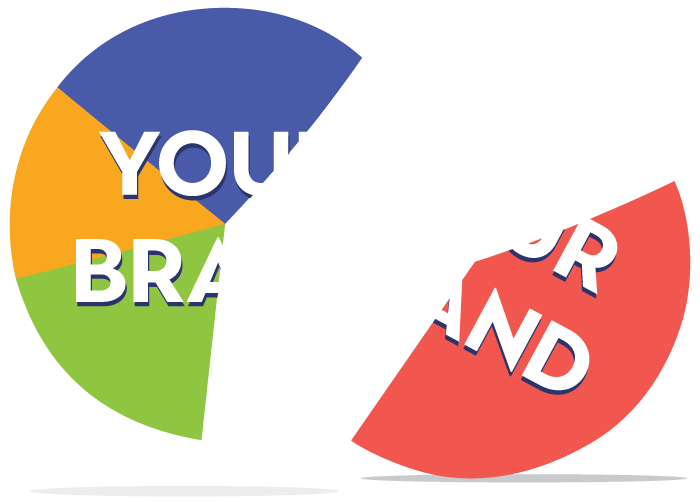What’s Your Brand Building Strategy?

Can You Separate the Visuals From Your Brand?
A prospective client recently asked me to help them with a brand building strategy, but they didn’t think they needed a logo and weren’t particularly interested in the visuals. They needed to hone in on their messaging and target audience—what were they saying, and to whom? This way of thinking was refreshing to me, as so many business owners think of the logo as their brand, and it is hard to explain that there is a lot of strategic thinking that needs to go into an effective brand strategy.
Even so, at first I was thrown off. For many years I identified my profession principally as a designer, although I have always taken a very informed approach to a brand strategy framework — researching and formulating marketing objectives, helping to develop messaging and positioning. All of this research, however, has been in partnership with the visuals. I never considered isolating this part and leaving the visual development off, or really, leaving the visuals as they were prior to the brand development.
The question is: Can you approach a brand building strategy without visuals?
I thought it would be an interesting approach, so I dove in. As I formulated all of the questions and went to work seeking answers, researching the company’s history and objectives, and looking at the competition, I kept stumbling on visuals. At every turn, whether it was in the way a document was formatted with font choices and styling, or social media posts that included photos or memes, there was no getting away from the visual aspect of any communication.
Coming back to my design roots, I had to respect the fact that, while it is clear that words communicate, unless you’re only doing radio and podcasting, there is no way around addressing the visuals of your brand. Even if you choose not to use images, words — when not in audio format — are written, and therefore visual.
It reminded me of a lesson given by one of my first teachers at Parsons School of Design, Ray Hooper (Senior Designer for Abrams Books at the time.) He was a wonderful teacher who made learning fun, yet instilled in us very important lessons. The first day of class he told us to look around the simple, stark classroom and choose anything we saw inside the room to focus our attention on. Anything at all, whether it was a window frame, a light fixture, a white board, or a chair. He told us to look at it closely. Then he made the point that no matter what the object, someone, at some time, designed it. Design is all around us — all the time! Every physical thing we interact with that has been created by humans, has been designed by humans!
I am called to revisit this early lesson as I chuckle at being lead so far astray as to think I could create a brand without considering the visuals. It turns out, you can’t. If you don’t consider the visuals, it doesn’t mean there aren’t any, it only means you did not take them into consideration when you put all of your hard work into the other components of your brand building strategy; your target audience, positioning, marketing messaging and content development.
Another point comes from Master Marketer, Seth Godin as he says in Debbie Millman’s breakthrough book, Brand Thinking:
“The reason we keep refreshing the way so many things look is because of our ceaseless race to leverage the feelings of safety and nostalgia this old thing imparts, while simultaneously injecting a sense of newness to seduce us into reengaging in the experience.”
– Seth Godin
In other words, even successful, longstanding brands need to revisit not only their messaging, but their visual representation from time to time. It’s a huge part of what human beings respond to.
But Where and How do the Visuals Come into Play?
1. YOUR LOGO
Acknowledging the fact that a logo is not a brand, it would be a mistake to deem it a useless investment. Since it will be seen and used everywhere from the header of your website to your printed materials, social media pages and advertising, your logo is the ultimate visual representation of your brand. The meaning held in the symbolism of the object or letterform(s), the color choice(s) and the shape will all say something about your business’ values and personality.
2. YOUR DIGITAL IMAGERY
Do your website pages, social media posts, newsletters, blog stories and promotional materials use visuals? Are they as consistent in their look & feel as your messaging? This is critical to brand recognition, and too often overlooked.
3. YOUR IN-PERSON PRESENCE
From conventions and trade shows to in-person networking events, real live encounters are now coming back into play in the business world. You will have printed materials to hand out, displays for your booth and/or presentation materials that must be consistent with your brand in order to ensure people will remember you.
In conclusion, your visuals are the microphone through which your brand speaks. If the “sound” isn’t clear; if it crackles and squeaks, or muffles your voice, it doesn’t matter what you have to say, you will lose a large portion of your audience. If, on the other hand, it does what it is supposed to, all that will be heard is the clear, sweet sound of your newly branded voice.
I offer a number of approaches to take the next step in developing your brand, depending on your needs. If you’re ready, schedule your free, no obligation consultation today.

